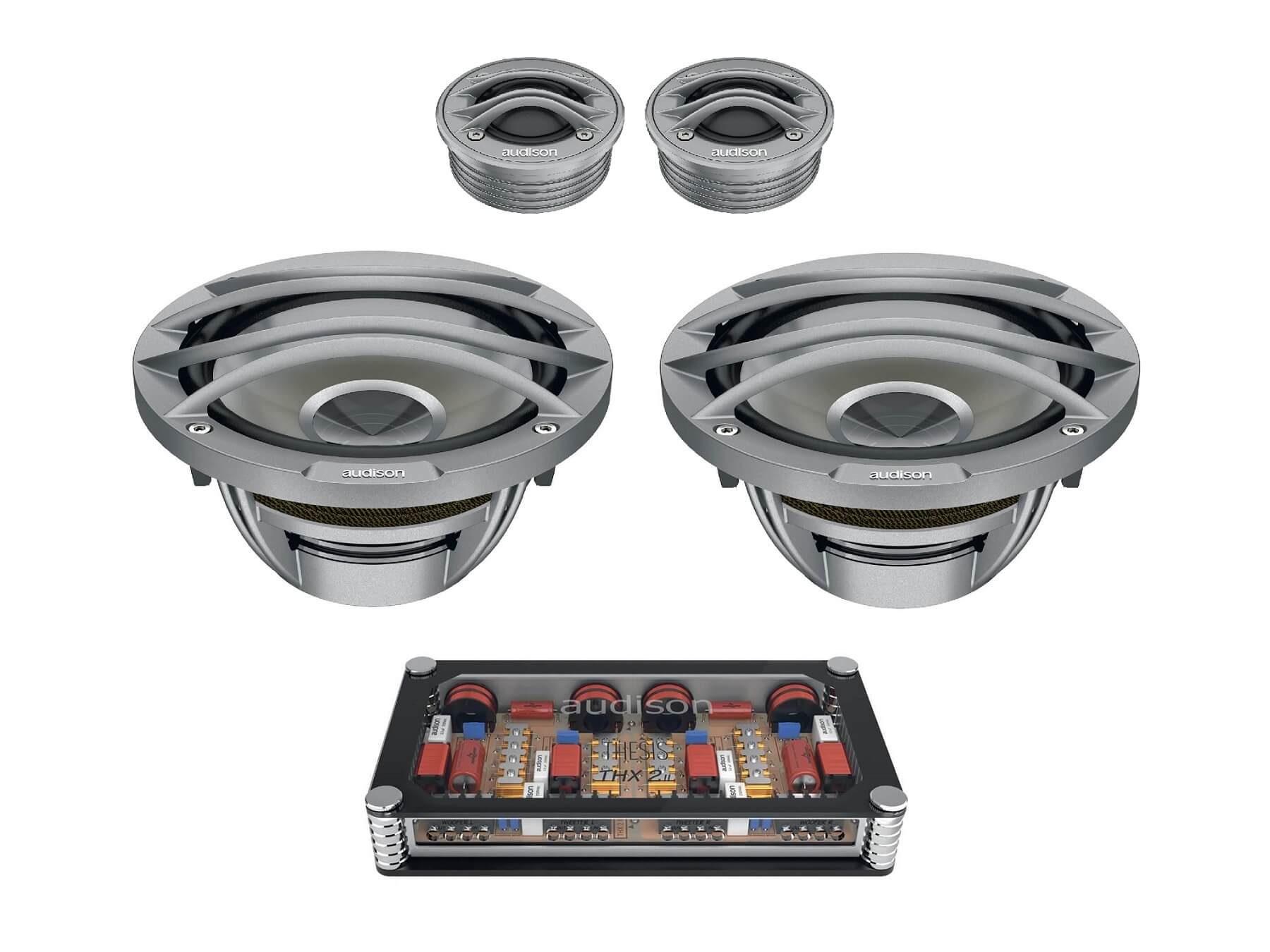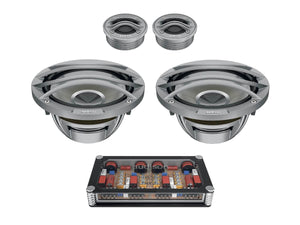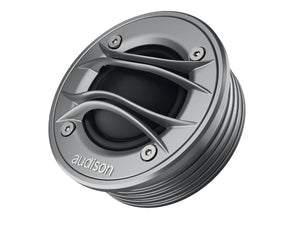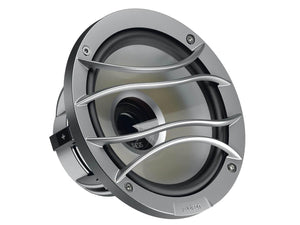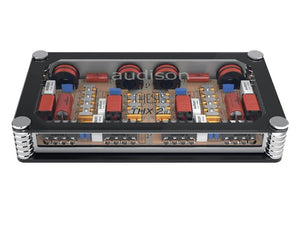Audison Thesis TH K2 II P Coro - 2 Way Speaker System
Ask a Question
Delivery Information
Christmas period (21 Dec - 5 Jan)
As we, our partners, suppliers manufacturers and distributors have some time off and shipping companies are at their busiest, we ask for your patience whilst processing any orders during this period. You can expect delays during this period but please be aware we will receive and process your orders in the best possible time. We would expect what would usually be next day, may well be 2-4 days depending on the day of your order. The same goes for specialist products from the list below.
with that said, from us, have a lovely, wholesome Christmas and new year break.
Free Delivery on Orders over £100
All orders over £100 qualify for Free Shipping in the UK Mainland, with no exceptions.
For orders under £100 we apply a flat rate charge of £8.99 using a 24hr Tracked Courier Service.
Northern Ireland
Orders to Northern Ireland above £300 qualify for Free Shipping.
Orders to Northern Ireland below £300 are subject to a £25 Shipping Charge.
When Will I Receive my Order
We are building our stock inventory, some items can be dispatched quickly, but some will take a bit longer. If you have any questions regarding shipping, or if you're ordering something and have an important deadline please get in touch first to guarantee delivery before a certain date.
Ex Demo - Next day if ordered before mid day.
The following brands are delivered within 1 - 2 Working Days:
- AudioControl
- AudioLab
- Audison
- Blackvue
- Cyrus
- Dynaudio (Car Audio)
- Focal
- Hertz
- Hi-Fi Rose
- IsoAcoustics
- Mission
- Morel
- Ortofon
- Pro-Ject
- Q Acoustics
- Roon
- Skinz
- Sony
- Wharfedale
The following brands are delivered within 2 - 3 Working Days:
- Alpine
- Blaupunkt
- Chord Cables
- Luxman
- JL Audio Car Audio and Hifi
The following brands are shipped within 7 - 10 Working Days:
- Amphion
- Auralic
- Dynaudio (Home)
- Dynaudio Car Audio on certain parts
The following brands are custom order and usually arrive within 4 weeks:
- Heco
The following brands are shipped within 6 - 8 Weeks:
- Recaro (Seats are built to order)
The following brands are for collection or personal delivery by a member of the Studio Incar team:
- Hegel
- Certain Dynaudio lines (Confidence etc)
If there are alterations to these time frames we will contact you after an order is placed. Sometimes it may be quicker.
How Do I Track My Order
Once your order has been shipped we will email you a tracking number and a link to the couriers website. Please contact us on 01489 578951 if you do not receive this email.
How Do I Get Free Delivery?
Online orders over £100 will automatically have free delivery applied when you add to basket. Unfortunately, this offer only extends to web orders with a delivery address in the UK Mainland – N Ireland, Ireland, parts of Scotland, Highlands and Islands delivery addresses will have their exact carriage cost calculated during checkout.
Upon Receipt of Your Order
You are advised to carefully inspect the package and goods to ensure they are intact and complete before signing for receipt of delivery. Should you find the parcel to be damaged or incomplete you must refuse delivery of the goods or sign "Damaged" then contact us on the day of delivery.
Bank Holidays
Our couriers do not deliver on a Bank Holiday so your parcel will be delivered on the next working day.
For the enthusiasts who prefer to use a passive filter, the R&D team has created the Audison Thesis THX 2 II, a crossover engineered without compromise with the use of high quality resistors, capacitors and inductors. The filter, for both TH 6.5 II woofer and TH 1.5 II tweeter, has special compensation networks that optimize the load seen by the amplifier. The filtering configuration allows the following fine-tuning options to improve the performance in the passenger compartment:
- 4 emission levels for the tweeter ( -4, -2 , 0, +1,5 dB), designed with L-Pad technique
- Mid-frequency level control (-4 / -2 / 0 / +1,5 dB) centered at 900 Hz to vary the sound character from the analytical one obtained from professional monitors to the softer one typical of the most sophisticated home systems.
- Possibility of bi-amplification
Audison Thesis TH K2 II P Coro - Product Features
TH 1.5 II violino Tweeter
- 34 mm CCAW single layer voice coil combining light weight, stability at lower frequencies and total absence of musical transients compression.
- Extremely powerful custom N38 “H-grade” Neodymium magnet providing 1.67 T*m in the magnetic gap for superb dynamic response and very low distortion in the whole frequency range.
- Exclusive air-loading system resulting in a resonance frequency below 800 Hz, for filter set-up starting as low as 1.5 kHz - 12dB/Oct.
- 38 mm natural silk dome optimized with extensive material characterization, laser vibrometer scanning and Finite Element Analysis methods for a smooth and extended response.
- Frequency response up to 26 kHz optimized for off-axis installation.
- TH 1.5 II Violino Tuning System featuring two types of electroacoustic load: bottom case or bottom disk according to targets of highest performance as well as flexibility of in-car integration.
- Full solid metal construction structure with each part exclusively designed and produced for the Audison TH 1.5 II.
- FEM (Finite Element Method) optimized faceplate and front spokes for an improved dispersion pattern.
- eID technology providing TH 1.5 II traceability starting from the manufacturing stage up to the owner.
TH 6.5 II sax Woofer
- 50 mm mobile voice coil in CCAR (Copper Clad Aluminum Ribbon) wound with flat wire to maximize the force factor and heat dissipation.
- Low inductance of the mobile voice coil to optimize the emission in medium-high band (2-3 kHz).
- N48 “H-grade” neodymium magnet with superb thermal stability to guarantee an optimal dynamic reserve in every situation.
- Magnetic group geometry designed using finite element simulation software to maximize efficiency by concentrating the magnetic field in the gap.
- Membrane made of TPX®, a transparent material that reduces the frequency response irregularities in the mid-high band, leaving the speaker interior in full view.
- Membrane geometry designed using simulation software, to obtain a smooth emission over all the listening angles.
- Basket made of a single piece of die-cast aluminium featuring four pairs of spokes to optimize heat transfer, nullify turbulent airflows and ensure maximum structural rigidity.
- Hi-excursion suspension and spider, optimized with simulations of the loudspeaker multi-physical behavior.
- eID technology providing TH 6.5 II traceability starting from the manufacturing stage up to the owner.
THX 2 II Crossover
- Construction without compromise with the use of high quality resistors, capacitors and inductors.
- Use of compensation networks for both woofer and tweeter, which optimize the load seen by the amplifier.
- Best Envelopment filtering configuration with a well-distributed vertical scene along the entire height of the passenger compartment.
- 4 emission levels for the tweeter ( -4, -2 , 0, +1,5 dB), designed using L-Pad technique.
- mid-frequency level control (-3 -> 0 dB) centered at 900 Hz.
- Possibility of bi-amplification.
Technical Specifications
- Comp - 2-Way System
- Size - Woofer 160mm (6.5"), Tweeter 38mm (1.5")
- Power Handling - 150 W Continuous Power, 300 W Peak Power
- Frequency Response - 40 Hz – 26k Hz
- Impedance - 4 Ω
- Sensitivity - 87 dB/Spl
Further Information
What is Our Return Policy?
Subject to the below exceptions, Studio Incar LTD is happy to exchange or refund your purchase within 30 days of delivery. Your refund will be credited to the original payment card on the day of request but may take up to 14 working days.
Unwanted goods must be returned in as-new fully re-saleable condition with any and all packaging intact. We reserve the right to refuse an exchange or full refund if goods are not returned in as new re-saleable condition or are damaged. If these conditions are met we will gladly offer a replacement, exchange or refund.
Refunds on promotional goods purchased under a promotional offer will be based on the terms of the promotional price. Our 30 days returns policy is in addition to the standard 14 day returns offered by the Consumer Contact Regulations.
If for any reason you believe your product is defective please notify us immediately on 01489 578951 or via email. If your product is faulty or covered under warranty any carriage costs incurred shipping the goods back will be refunded up to the amount of £10.
Upon receipt of your order you are advised to carefully inspect the package and goods to ensure they are intact and complete, before signing for receipt of delivery. Should you find the parcel to be damaged or incomplete you must refuse delivery of the goods.
Please report any damaged or faulty items to Studio Incar within 24 hours of receipt of the goods and provide any information requested (eg photographs) within 24 hours.
If you have ordered the incorrect part or wish to return an order we will gladly exchange the product free of charge with just the carriage to pay.
How do I Return a Product?
Please follow the instructions below before returning any goods
We require all returned goods (defective, damaged, unwanted or otherwise) to be sent back to us in the original condition they were received in, with all accessories, manuals and the original packaging. Items that are being returned purely because they are no longer wanted should be returned in unopened packaging. Studio Incar retain the right to refuse a refund or charge an appropriate fee for items that are returned without original packaging and/or without accessories and manuals.
Collection Procedure
- In the event of a product failing, your first course of action should be to contact Studio Incar at info@studioincar.co.uk
- Within 6 months of purchase date: Once the fault has been established and deemed impossible to be solved on site, Studio Incar will arrange for collection of the item at cost to the customer. This will be refunded in full if the item is found to be faulty.
- Please note that if the item has a non-warrantable fault the customer will be charge for carriage both ways, parts and labour.
Our Return address is:
Returns
Studio Incar
Unit 23, Mitchell Close
Fareham
PO15 5SE
How do I Cancel an Order?
You may cancel your order (or any part of it) for any reason before dispatch, however, if your order has already been dispatched & is with the courier a restocking fee may apply.
Please email us at info@studioincar.co.uk or call 01489 578951 to cancel an order.
The products we use and sell are of the highest quality and we trust them wholeheartedly, but every now and again a product has a fault that is covered under the manufacturers warranty.
In the event of such an occurance please contact us via email at info@studioincar.co.uk to proceed with the warranty process.
Below is a list of all the Manufacturers warranty timeframes with any special instructions for extended warranties:
Alpine
- 1 Year Standard Manufacturers Warranty
Amphion
5 Years standard Manufacturers Warranty
AudioControl
- 5 Years with Installation by an Authorised Installer (Studio Incar is an Authorised Installer)
- 1 Year if you are doing your own Installation
- 2 Years if you register the product with the UK supplier
AudioLab
- 2 Years standard Manufacturers warranty
Audison
- 1 Year standard Manufacturers warranty
- 2 Years if you register the product with the UK supplier
Auralic
- 90 Days Standard Manufacturers Warranty
- 3 Years Extended Warranty - Product Registration within 30 days of Purchase
Blackvue
- 6 Months standard Manufacturers warranty
Blaupunkt
1 Year standard Manufacturers warranty
Chord Company
- Lifetime Warranty
Cyrus Audio
- 40 series - 5 Years
- XR series - 3 Years
- Classic series - 2 Years
- Turntable - 3 Years
Product Registration Here
Dynaudio
- 2 Years on Car Audio Products - No Extendable Warranty
- 2 Years standard Warranty on Home Audio Products
- up to 8 Years Extendable Warranty on Home Audio Products when you register at Dynaudio
Focal
- 1 Year Standard Manufacturers Warranty
- 2 Years Extended Warranty when registered with Focal
Hegel
- 2 Years Standard Manufacturers Warranty
Hertz
- 1 Year standard Manufacturers warranty
- 2 Years if you register the product with the UK supplier
HiFi Rose
2 Years Standard Manufacturers Warranty
iFi Audio
- 1 Year Standard Manufacturers Warranty
JL Audio
- 1 Year for Speakers and Subwoofers
- 2 Years for Amplifiers and Processors
Luxman
3 Years Standard Manufacturers Warranty
Mission
1 Year Standard Manufacturer Warranty
3 Years Extended Warranty if Registered with Mission
Ortofon
- 1 Year Standard Manufacturers Warranty
Peachtree Audio
- 2 Years Standard Manufacturers Warranty
- 3 Years Extended Warranty if Registered with Peachtree
Pro-Ject
- 2 Years Standard Manufacturers Warranty
- 3 Years Extended Warranty if Registered with Pro-Ject
Q-Acoustics
- 4 Years for Passive Loudspeakers
- 1 Year for Active Loudspeakers / Subwoofers
- 5 Years for Passive Loudspeakers if Registers with Q Acoustics
- 2 Years for Active Loudspeakers / Subwoofers if Registered with Q Acoustics
SolidSteel
- 1 Year Standard Manufacturer Warranty
Sony
- 1 Year Standard Manufacturer Warranty
Wharfedale
- 2 Years Standard Manufacturers Warranty
- 3 Years Extended Warranty if registered with Wharfedale

